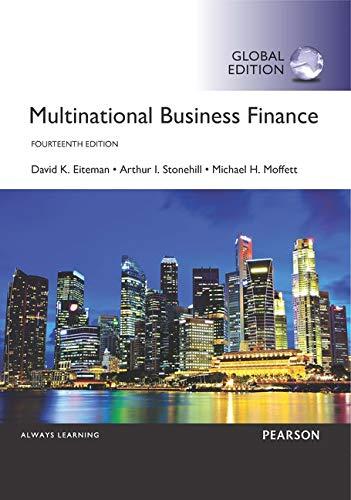That possibility arises from a fundamental tenet of international law that is not written down in any
Question:
That possibility arises from a fundamental tenet of international law that is not written down in any law book: In extremis, the locals win.
—“Bad Trades, Except in Korea,” by Floyd Norris, The New York Times, April 2, 2009 South Korean exporters in 2006, 2007, and into 2008 were not particularly happy with exchange rate trends. The South Korean won (KRW) had been appreciating, slowly but steadily, for years against the U.S. dollar. This was a major problem for Korean manufacturers, as much of their sales was exports to buyers paying in U.S. dollars. As the dollar continued to weaken, each dollar resulted in fewer and fewer Korean won—and nearly all of their costs were in Korean won. Korean banks, in an effort to service these hedging needs, became the sale and promotion of Knock-In Knock-Out option agreements (KiKos).
Knock-In Knock-Outs (KiKos)
Many South Korean manufacturers had suffered falling margins on sales for years. Already operating in highly competitive markets, the appreciation of the won had cut further and further into their margins after currency settlement. As seen in Exhibit A, the won had traded in a narrow range for years. But that was little comfort as the difference between KRW1,000 and KRW 930 to the dollar was a big chunk of margin.
South Korean banks had started promoting KiKos as a way of managing this currency risk. The Knock-In Knock-Out (KiKo) was a complex option structure, which

combined the sale of call options on the KRW (the knock-in component) and the purchase of put options on the USD (the knock-out component). These structures then established the trading range seen in Exhibit A that the banks and exporters believed that the won would stay within. In one case the bank salesman told a Korean manufacturer “we are 99% sure that the Korean won will continue to stay within this trading range for the year.”3 But that was not the entirety of the KiKo structure.
The bottom of the range, essentially a protective put on the dollar, assured the exporter of being able to sell dollars at a set rate if the won did indeed continue to appreciate.
This strike rate was set close-in to the current market and was therefore quite expensive. In order to finance that purchase the sale of calls on the knock-in rate was a multiple (sometimes call the turbo feature) meaning that the exporter sold call options on a multiple, sometimes two or three times, the amount of the currency exposure. The exporters were “over-hedged.” This multiple yielded higher earnings on the call options that financed the purchased puts and provided added funds to be contributed to the.........
Mini-Case Questions 1. What were the expectations—and the fears—of the South Korean exporting firms that purchase the KiKos?
2. What is the responsibility of a bank that is offering and promoting these derivative products to its customers?
Does it have some duty to protect their interests? Who do you think was at fault in this case?
3. If you were a consultant advising firms on their use of foreign currency derivative products, what lessons would you draw from this case, and how would you communicate that to your clients?
Step by Step Answer:

Multinational Business Finance
ISBN: 9781292097879
14th Global Edition
Authors: David Eiteman, Arthur Stonehill, Michael Moffett




